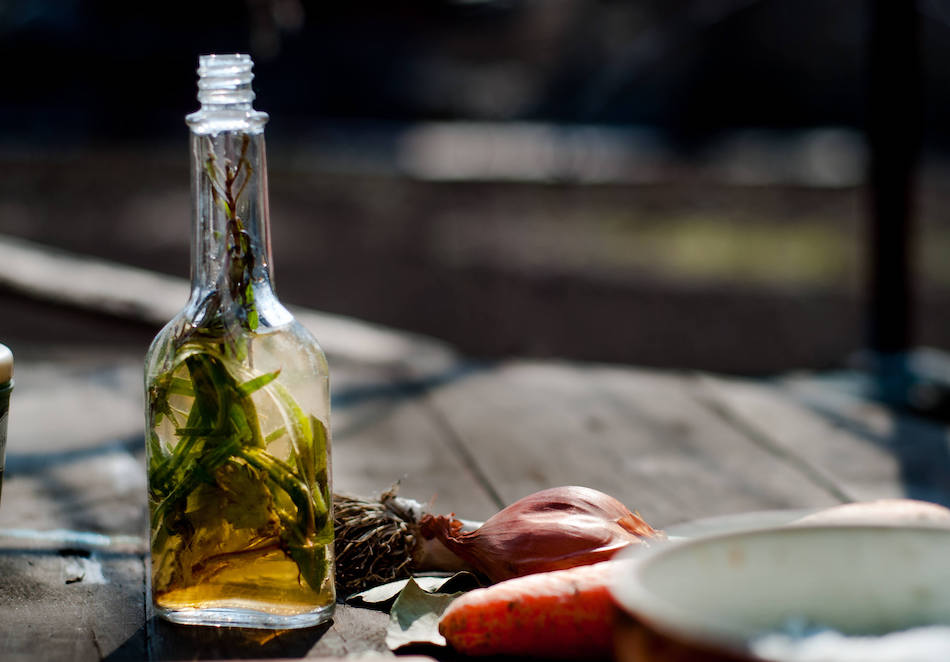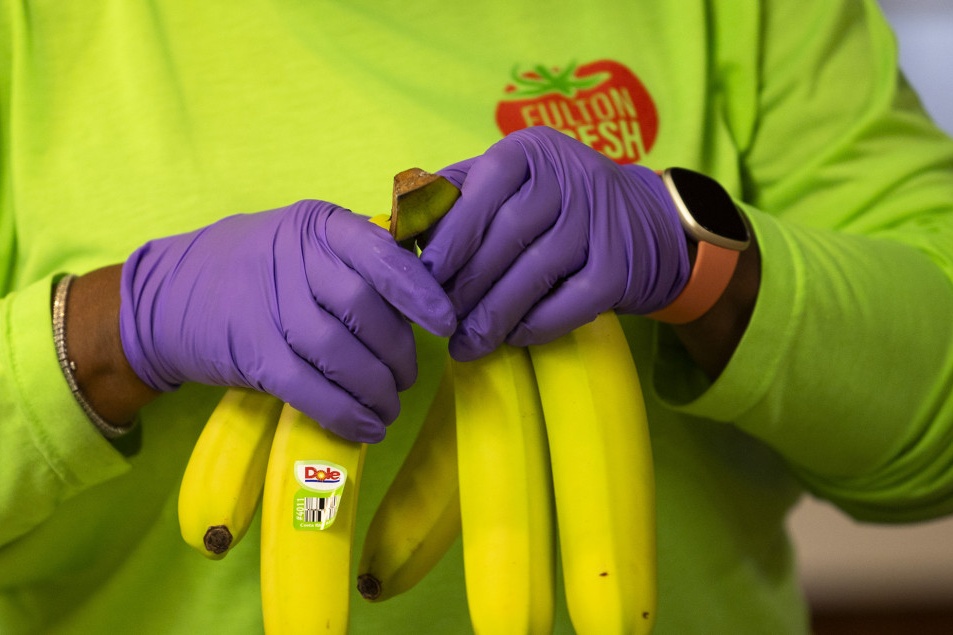
The holiday season is here, and homemade gifts are part of the culture of many families around the world. Infused cooking oils have a great aesthetic appearance, provide an enhanced flavor profile, and can make a special homemade gift. However, if not done properly, homemade food gifts like infused oil may cause serious illness and potential death.
The use of garlic and herbs to infuse oils brings an extra level of complexity to food safety. Oils provide an anaerobic environment, which when combined with low-acid food matrixes, such as garlic and herbs, provides perfect conditions for specific bacteria to thrive. Clostridium botulinum is of concern in this case. Spores of C. botulinum may be present in garlic and herbs and when faced with an ideal environment (no oxygen, low acid content, ambient temperature), they can germinate — and the vegetative bacterial cells produce a deadly neurotoxin.
To avoid any food safety trouble, check out the following helpful tips to safely infuse oils.
Two ways to infuse oils
For either of the methods below, always start by sterilizing your containers. Thoroughly wash your glass container and boil it for 10 minutes to ensure the destruction of bacteria, yeasts, and molds. Select quality ingredients, wash them thoroughly and pat dry.
Non-acidified dried or fresh garlic and herbs
In this method, the oil is heated to 180 degrees Fahrenheit before adding dried or fresh garlic and herbs. Since acidification is not used as a hurdle for bacteria, infused oils made with this method must be kept in the refrigerator and discarded after four days of being made. Alternatively, you could freeze the oil until you are ready to use it.
Although you may use dried garlic and herbs, and the availability of water is low (lower water activity), it does not ensure that your ingredients are dried enough to provide a safe product. Water activity is measured in a laboratory with specialized equipment. Even small pockets of moisture could provide enough water for bacteria to survive and grow.
Acidified fresh garlic and herbs
In this method, garlic and herbs are acidified with an acid that is strong enough to prevent C. botulism from growing. Researchers from the University of Idaho developed a safe method to acidify garlic, basil, oregano or rosemary to a pH of 4.2 or less within 24 hours. This method, if followed properly, allows you to store your infused oil at room temperature.
Acidification steps for garlic
-
- Mix 1 tablespoon of citric acid into 2 cups of water. Do not replace the citric acid solution with vinegar or lemon juice, as they have not been tested and may result in an unsafe final product.
- Coarsely chop peeled garlic cloves into 1/4-inch (or slightly smaller) pieces. You need 2/3 cup of chopped garlic. These measurements give you a ratio of 1 part garlic to 3 parts citric acid solution, which is critical. Changing the ratio may result in an unsafe product.
- Add the garlic to the citric acid solution, weighing it down so that it remains fully submerged. An easy way to weigh the garlic down is to make an additional batch of the citric acid solution and use it to fill a zip-close bag. Place the bag on top of the garlic. The weighted bag will take the shape of your container while also keeping the garlic submerged. You can also use a bowl as a weight and place it on top of the garlic.
- Allow the garlic to sit submerged for 24 hours at room temperature. After 24 hours, drain the solution. Follow the directions in the "Infusing the oil" section below to infuse your oil.
Acidification steps for fresh herbs (basil, oregano or rosemary)
-
- Mix 1 tablespoon of citric acid into 2 cups of water. Do not replace the citric acid solution with vinegar or lemon juice, as they have not been tested and may result in an unsafe final product.
- Wash and pat dry your fresh herbs, keeping the leaves attached to the stems. You need 1-1/2 cups (or 1.7 ounces) of basil, rosemary or oregano. These measurements give you a ratio of 1 part herb to 10 parts citric acid solution, which is critical. Changing the ratio may result in an unsafe product.
- Add the herbs to the citric acid solution, weighing it down so that it remains fully submerged. An easy way to weigh the herbs down is to make an additional batch of the citric acid solution and use it to fill a zip-close bag. Place the bag on top of the herbs. The weighted bag will take the shape of your container while also keeping the herbs submerged. Alternatively, you can also use a bowl as a weight and place it on top of the garlic.
- Allow the herbs to sit submerged for 24 hours at room temperature. After 24 hours, drain the solution and gently pat dry. Follow the directions in the "Infusing the oil" section below to infuse your oil.
Infusing the oil
-
- Add 1 part acidified garlic or herbs to 10 parts of room temperature oil. This ratio may be increased or decreased based on your personal taste preference.
- Infuse the oil for one to 10 days. The longer you let it infuse, the more intense the flavor of the oil will be. You can check the flavor regularly by inserting a clean utensil into the oil and tasting it until it has reached the intensity you desire. Only allow clean utensils to touch your oil. If the utensil isn’t clean, it can introduce contamination into the oil.
- For a quicker infusion method, heat the oil to 140 F for five minutes. Add 1 part acidified garlic or herbs to 10 parts of heated oil.
- Once the desired flavor has been accomplished, remove the acidified garlic or herbs, as flavor intensity increases with time.
Storage
-
- For best quality and flavor, store infused oils in dark-colored bottles and avoid heat exposure, as oils oxidize and turn rancid quicker with the presence of light and heat.
- For long-term storage, refrigerate or freeze.
To learn more or to access the full research publication, visit foodprotection.org.






